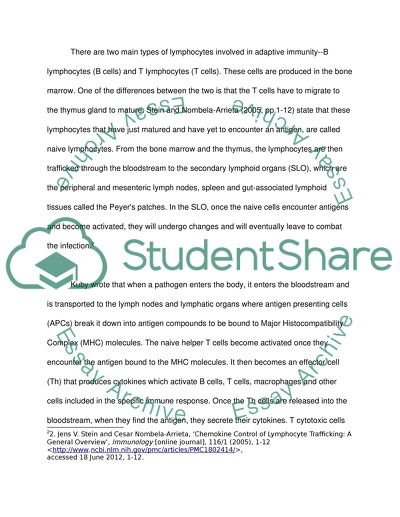Why is the trafficking of naive lymphocytes important Outline the Essay. Retrieved from https://studentshare.org/biology/1453242-why-is-the-trafficking-of-naive-lymphocytes
Why Is the Trafficking of Naive Lymphocytes Important Outline the Essay. https://studentshare.org/biology/1453242-why-is-the-trafficking-of-naive-lymphocytes.


